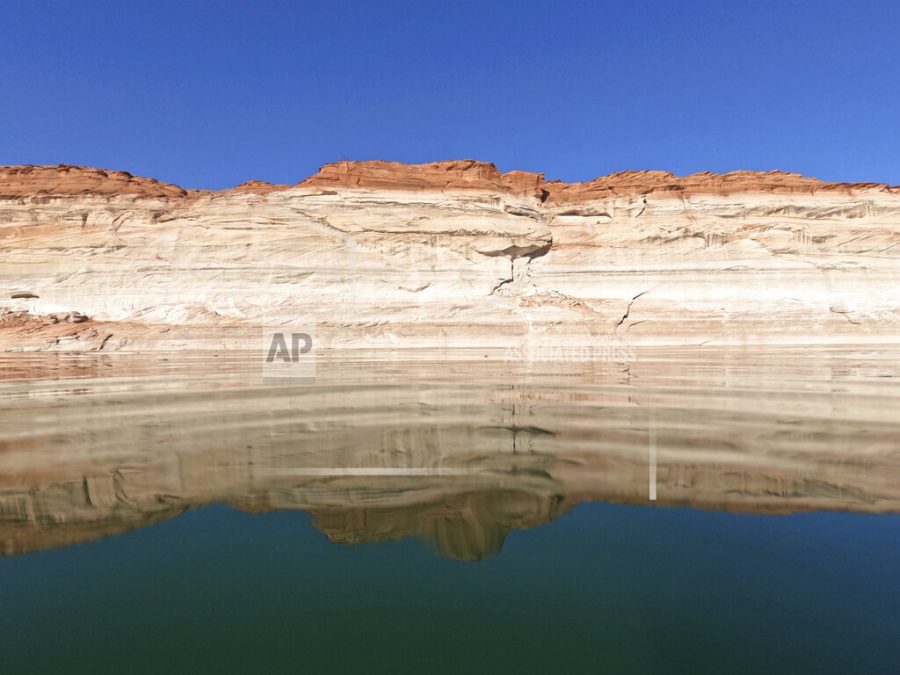Lake Powell’s Water Crisis
Bathtub rings show how low Lake Powell levels have dropped Wednesday, June 8, 2022, in Page, Ariz. (AP Photo/Brittany Peterson)
September 16, 2022
Lake Powell, AZ- The Nation’s second-largest reservoir, Lake Powell, is currently in danger, due to extreme climate change. A common strong indicator of climate change is the drastic change in water levels. With the severe amount of heat and little to no rainfall that Arizona experienced this past summer, the water level has been at its lowest level since it was first filled between the 1960s-1980s. Lake Powell’s drought has been so drastic that the sediments from the White Rock have stained the side of the dam and show where the water level used to be.
The National Government is concerned that the low levels will eventually be too low to produce hydropower. Powell produces energy for more than 5.8 million homes and corporations in Arizona, Colorado, Nebraska, Nevada, New Mexico, Utah, and Wyoming. The alternative to hydropower would be fossil fuels, but everyone is going to have to pay the price, this means that electricity bills will increase drastically. Not everyone can afford their electricity bills to increase and will not be able to pay for heating or air conditioning. The Navajo community, which lives in Arizona, New Mexico, and Utah, as well as the other citizens that live in the four other states, depending on Lake Powell to source all their electrical needs.
According to Lake Powell’s Water Database, as of September 5th, 2022, the water level is currently sitting at an elevation of 3531.05 feet above sea level. In the hopes that the water level does not drop an additional 32 feet in the near future, it could even cause hydroelectricity to stop at the Glen Canyon Dam, the second highest concrete arch dam in the United States
Officials urge citizens to do their part as a community and conserve water responsibly. They are also hopeful that the snow from the upcoming winter will assist the water levels a significant amount, once the water melts into the Colorado Rockies.



























